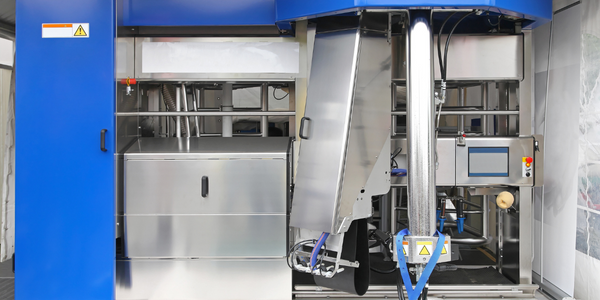Customer Company Size
Large Corporate
Country
- Germany
Product
- Camunda Platform
Tech Stack
- BPMN
- DMN
Implementation Scale
- Enterprise-wide Deployment
Impact Metrics
- Productivity Improvements
- Digital Expertise
Technology Category
- Platform as a Service (PaaS) - Application Development Platforms
Applicable Functions
- Logistics & Transportation
Use Cases
- Process Control & Optimization
Services
- Software Design & Engineering Services
About The Customer
Founded in 1979, AEB is a leading software provider for the global trade and logistics industry, with more than 5,000 customers across the world relying on AEB products and solutions to power their logistics workflows. The logistics industry is characterized by complex rules and regulations, governing imports and exports across international borders, leading companies to build deep business process knowledge over many years. Business processes in intra-logistics and customs are often similar in different industries, whether in production or logistics. However, it is clear that the individual process solutions that organizations have built over time act as important differentiators for companies among their competitors.
The Challenge
The logistics industry is characterized by complex rules and regulations, governing imports and exports across international borders, leading companies to build deep business process knowledge over many years. Automating these deeply customized processes with off-the-shelf software leads to poor solutions and user dissatisfaction. But individual software solutions developed specifically for companies are unreasonably expensive. Like every business, the production and logistics industries are facing intense pressure to modernize. Constant optimization of processes is necessary to maintain and differentiate a company in the face of ever-tougher competition.
The Solution
AEB saw an opportunity to adapt a trend it is deeply familiar with as a software company: creating process automation applications that are easy to use, easy to adapt, and can be understood and operated intuitively by people with little technical expertise. This would enable companies to take control of their business processes creating, managing and running their workflows. In order to provide the best solutions to users, under constantly changing conditions, AEB developed nEXt – a highly customizable developer framework for process driven applications, which provides higher standards in flexibility and adaptability for the individual processes of each customer. Running with Camunda Platform for both BPMN and DMN, processes, apps, data models, and APIs can be configured and adjusted to a large extent – without downtime. Meanwhile numerous tools and collections of reusable components integrated into the AEB cloud platform support both the creation of individual User Interfaces and the implementation of business logic.
Operational Impact

Case Study missing?
Start adding your own!
Register with your work email and create a new case study profile for your business.
Related Case Studies.

Case Study
System 800xA at Indian Cement Plants
Chettinad Cement recognized that further efficiencies could be achieved in its cement manufacturing process. It looked to investing in comprehensive operational and control technologies to manage and derive productivity and energy efficiency gains from the assets on Line 2, their second plant in India.

Case Study
Airbus Soars with Wearable Technology
Building an Airbus aircraft involves complex manufacturing processes consisting of thousands of moving parts. Speed and accuracy are critical to business and competitive advantage. Improvements in both would have high impact on Airbus’ bottom line. Airbus wanted to help operators reduce the complexity of assembling cabin seats and decrease the time required to complete this task.

Case Study
Improving Production Line Efficiency with Ethernet Micro RTU Controller
Moxa was asked to provide a connectivity solution for one of the world's leading cosmetics companies. This multinational corporation, with retail presence in 130 countries, 23 global braches, and over 66,000 employees, sought to improve the efficiency of their production process by migrating from manual monitoring to an automatic productivity monitoring system. The production line was being monitored by ABB Real-TPI, a factory information system that offers data collection and analysis to improve plant efficiency. Due to software limitations, the customer needed an OPC server and a corresponding I/O solution to collect data from additional sensor devices for the Real-TPI system. The goal is to enable the factory information system to more thoroughly collect data from every corner of the production line. This will improve its ability to measure Overall Equipment Effectiveness (OEE) and translate into increased production efficiencies. System Requirements • Instant status updates while still consuming minimal bandwidth to relieve strain on limited factory networks • Interoperable with ABB Real-TPI • Small form factor appropriate for deployment where space is scarce • Remote software management and configuration to simplify operations

Case Study
Developing Smart Tools for the Airbus Factory
Manufacturing and assembly of aircraft, which involves tens of thousands of steps that must be followed by the operators, and a single mistake in the process could cost hundreds of thousands of dollars to fix, makes the room for error very small.









